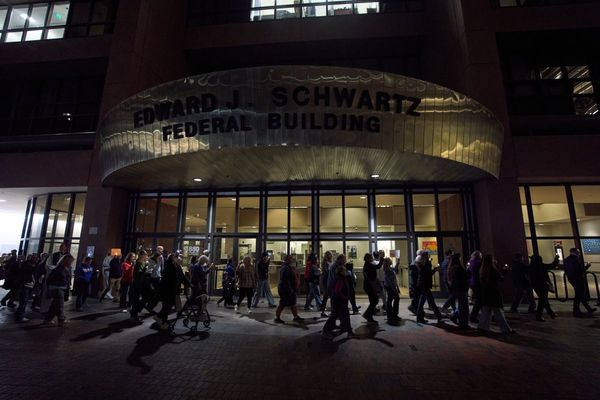
Buying your first home is a huge milestone—exciting, nerve-wracking, and full of decisions that can shape your financial future. Touring potential properties is more than just imagining your furniture in the living room; it’s your chance to spot issues that could cost you big down the road. Many first-time buyers get swept up in the thrill and overlook warning signs that could turn their dream home into a money pit. Knowing what to look for can help you avoid costly surprises and make a confident, informed choice. Here are ten red flags to keep in mind when touring a potential first home.
1. Cracks in Walls and Ceilings
Cracks might seem minor, but they can signal serious structural problems in a first home. Small hairline cracks are often just cosmetic, but large, jagged, or horizontal cracks could indicate foundation issues. Pay special attention to cracks around doors and windows, as these areas are most vulnerable to shifting. If you spot anything concerning, ask the seller for more information and consider bringing in a structural engineer for a professional opinion.
2. Signs of Water Damage
Water damage is a major red flag when touring a first home. Look for stains on ceilings, walls, or floors, and bubbling paint or warped wood. Musty odors can also signal hidden moisture problems. Water damage can lead to mold growth and expensive repairs, so don’t ignore these signs. Check under sinks, around toilets, and in the basement for any evidence of leaks or flooding.
3. Outdated Electrical Systems
An outdated or unsafe electrical system can be a dealbreaker for your first home. Look for old fuse boxes, exposed wiring, or outlets that don’t work. Flickering lights or warm outlets are also warning signs. Modern homes should have circuit breakers and grounded outlets. Electrical upgrades can be costly and are essential for safety, so factor this into your decision.
4. Poor Drainage Around the Property
Proper drainage is crucial to protect your first home from water intrusion and foundation damage. Check the exterior for pooling water, soggy spots, or gutters that don’t direct water away from the house. Poor drainage can lead to basement flooding and long-term structural issues. If you notice these problems, ask about recent repairs or improvements to the drainage system.
5. Roof in Disrepair
A damaged or aging roof is one of the most expensive repairs you might face as a first-time buyer. Look for missing or curling shingles, sagging areas, or visible leaks in the attic. Ask how old the roof is and when it was last replaced. A roof in poor condition can lead to water damage and higher insurance premiums, so don’t overlook this critical component of your first home.
6. Foundation Problems
Foundation issues can threaten the stability of your first home and lead to costly repairs. Watch for uneven floors, doors that stick, or gaps between walls and ceilings. Walk around the exterior and look for cracks in the foundation or brickwork. If you suspect foundation problems, consult a professional before moving forward.
7. Mold and Mildew
Mold isn’t just unsightly—it can also pose serious health risks, especially for children and those with allergies. When touring a first home, look for visible mold in bathrooms, basements, and around windows. Pay attention to musty smells, which can indicate hidden mold behind walls or under floors. Mold remediation can be expensive, so don’t ignore this red flag.
8. Signs of Pest Infestation
Pests like termites, rodents, or carpenter ants can cause significant damage to a first home. Look for droppings, chewed wood, or mud tubes along the foundation. Listen for scratching sounds in walls or ceilings. If you see any evidence of pests, ask the seller about past infestations and whether the home has been treated. A professional pest inspection is a smart move before making an offer.
9. Inadequate Insulation and Drafts
Energy efficiency matters, especially in your first home. Poor insulation can lead to high utility bills and uncomfortable living conditions. Check for drafts around windows and doors, and look in the attic for sufficient insulation. Older homes are especially prone to energy loss. Upgrading insulation can be costly, so factor this into your budget.
10. Unpermitted Renovations
Unpermitted work is a hidden risk for first-time buyers. If you notice recent renovations—like a finished basement or new bathroom—ask to see the permits. Unpermitted work can lead to safety hazards, insurance issues, and trouble when you try to sell. Always verify that major updates were done to the code and with the proper approvals.
Your First Home: Trust Your Instincts and Do Your Homework
Touring a potential first home is about more than falling in love with the kitchen or backyard. It’s your chance to spot red flags that could impact your finances and peace of mind for years to come. Take your time, ask questions, and don’t be afraid to walk away if something doesn’t feel right. A careful, informed approach will help you find a first home that’s truly a good investment.
What red flags have you spotted when touring homes? Share your stories or tips in the comments below!
Read More
How Burglars Use Pizza Delivery Apps to Scope Out Homes
7 Reasons Your Parents Want You To Put Their Homes and Cars In Your Name
The post 10 Red Flags to Look for When Touring a Potential First Home appeared first on The Free Financial Advisor.







